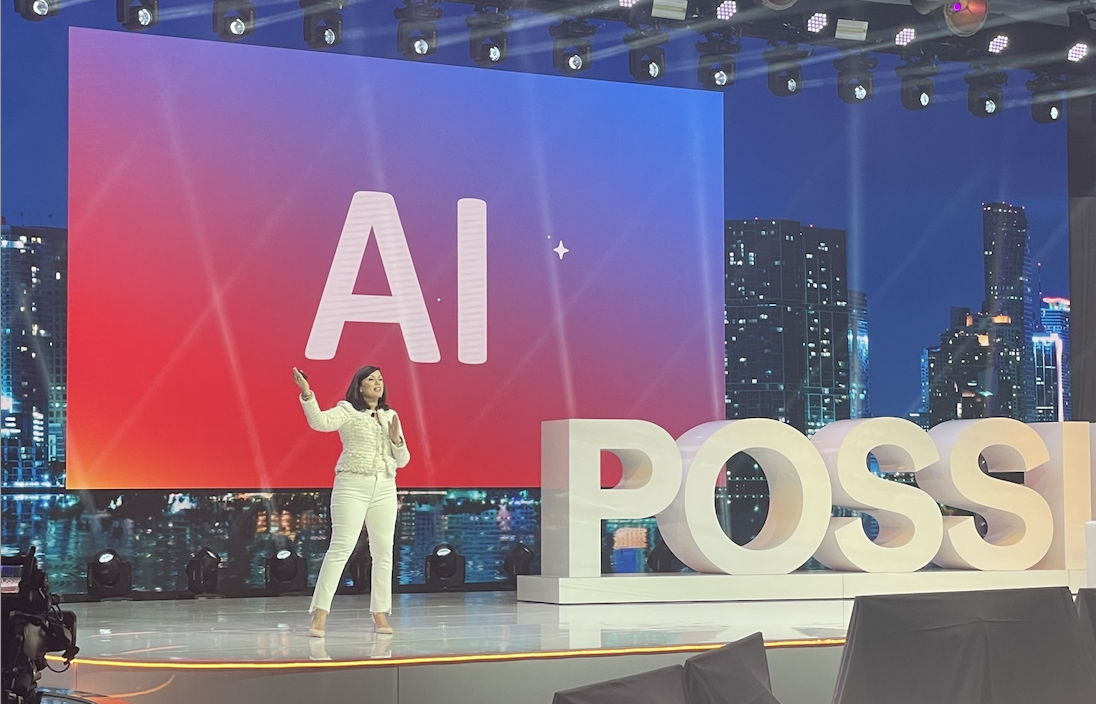What’s Possible in an AI-Driven Future

“The explosion of AI is going to transform us as marketers, it’s going to transform us as storytellers, it’s going to transform us as consumers,” quoted Ben Jones, Global Director, Creative Works at Google, at Possible, a new industry event dedicated to future-thinking marketers with a pulse on emerging innovations and technologies.
At the center of the 2-day conference, one question lingered, “What do you believe is possible for the future of advertising?”
The question opens the imagination of marketers, creatives, and CEOs who are preparing for a world that doesn’t yet exist within the confines of resources today. While answers were plentiful, one element was consistent: the evolution of AI.
“It is an opportunity to reimagine your business and unleash endless human creativity,” Google’s Kristen O’Hara spoke about the generative AI boom. “The gap between an idea and being able to execute on it is going to close so much faster. … With generative design, your designer can go from 10 ideas an hour to hundreds, if not thousands, in minutes.”

“I see AI as a resource to help us personalize [for consumers] in a way that we have never done before,” shared Han Wen, CDMO, L’Oreal. “How do we get the right product to the right customer at the right time? That is really the goal.”
“I think about ways in which I had struggles with my skin,” Wen continued. “With [not] knowing how to do my hair when I was younger in my life, I wish that there was more of an expedience for me to find those solutions. And I would love for one year from now for us to say, ‘We actually now can recognize when you’re about to experience acne or when you realize that these types of treatments are going to be better for your skin.’ That we can actually anticipate and deliver those messages and deliver the solutions and the products and help.”
AI is pushing new boundaries and unlocking creative effectiveness for brands; the proof is in the data. After decades of near-total focus on media efficiency measured in single-digit percentage gains, marketers are now turning their attention to creative effectiveness and, namely, creative data.
“Data is so important. It really helps you to act quickly. It’ll help you to have a strong test-and-learn plan so that you can build even more data,” says Nikki Stedd, Team Lead Marketing, Reckitt. “It’s truly a ‘show me the money, try it out’ correlation, to show that if [you] put the money here, you get ROI,”
With creative analytics directly linked to KPIs, teams can finally prove the impact of creative, and organizations must prepare to reevaluate how they look at advertising spend. “The CFO views advertising as an expense. And when you view something as an expense the tendency is to manage it downward over time,” says Joel Rubinson, President of Rubinson Partners. “With these types of multipliers, advertising actually becomes a self-funding, profit generator. You would never kill advertising if it were actually making a profit.”
A lot is possible in the future of advertising as generative AI tools expand, sharpen, and multiply. A few examples include:
- Measurable creative performance
- More targeted and personalized advertising
- Creative directly mapping back to ROI
While competition will inevitably increase, we can rest assured that an AI-driven future still requires a human hand for co-creation and strategy. As O’Hara stated in her keynote: “You’re not competing with AI. You’re competing with another marketer using AI.”





